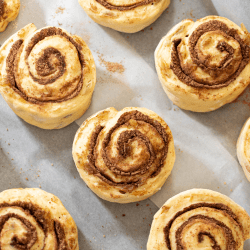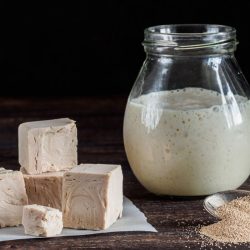Baking takes time and practice to master. Along the way, you might run into difficulties baking specific pastries. To get more specific, cinnamon rolls can fail to rise in the oven. If that is the case for you, we have found some answers for you to fix this issue.
There are several reasons why your cinnamon rolls did not rise. The first case is that you did not test your yeast. You need to examine it beforehand to see if it will work. Secondly, the yeast was old. If it is too old, the yeast would not be strong enough to provide a rise. Lastly, getting the temperature just right for yeast and dough, providing dough room to expand, and the type of flour used can all ensure your cinnamon rolls rise.
To get a rise, you need to meet the proper conditions. It might seem like rocket science. However, with some careful considerations, getting the dough to swell will get easier over time. To learn more, keep reading ahead.
![Cinnamon Rolls in wax paper, Why Didn't My Cinnamon Rolls Rise [And How To Fix It]](https://kitchenseer.com/wp-content/uploads/2021/06/Why-Didnt-My-Cinnamon-Rolls-Rise-And-How-To-Fix-It1.png)
Possible Reasons Your Rolls Did Not Rise
Cinnamon rolls use a leavening agent to get a light and fluffy texture. Most use yeast as a leavening agent for cinnamon rolls. If yeast is an ingredient present, you might have run into a few problems.
You Did Not Test The Yeast
Before you start, you should always test the yeast to see if it is working well. Yeast is a delicate ingredient. If you do not provide the ideal conditions, it can ruin your recipe.

To test the yeast, pour the amount of warm water your recipe calls for into a bowl. Place the yeast in the bowl and stir with a pinch of sugar. After 10 minutes or more, you should see some bubbling. Some foaming and a bready smell should also be present. If that is not the case, test another packet to make sure you do not have a bad batch.
The Yeast Did Not Have The Right Conditions
Yeast is a sensitive product. If you do not give it the ideal conditions, it will not produce the results you want. If it is too cold in the area, it will have trouble swelling. Likewise, if it comes in contact with something too hot, the yeast will die off. To avoid boiling yeast to death, the water it comes in contact with should measure around 110 to 115 degrees Fahrenheit.
Click here to see this yeast on Amazon.
Shelf life is also another problem you might have encountered. Some yeast packets are too old, even if you have recently purchased them from the grocery store. Yeast lasts four to six months in the pantry. It can last longer if you refrigerate it. If you had some yeast lying around from previous recipes, you might have waited too long to use it again.
You Did Not Use Grease
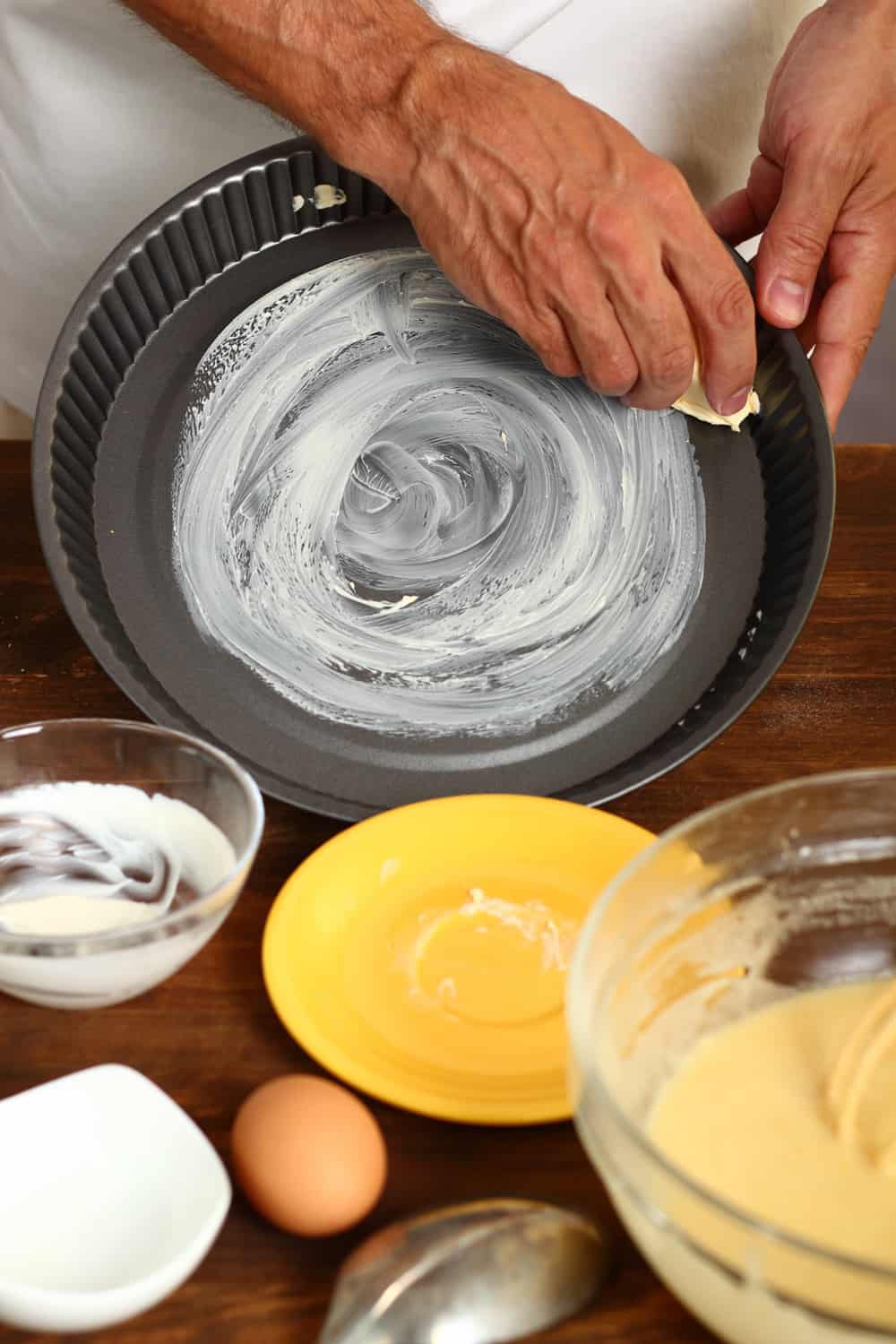
You need to store your dough in a bowl and cover it to let it rise. It is an easy step to forget, but you should also grease your bowl and the cover beforehand. The dough you need for cinnamon rolls will have a tacky feel. Tacky means it will stick a bit to the surface it is on. If you do not grease the bowl and cover, the dough will stick and tear.
For information on the best bowl to use for proofing, click here.
How To Fix Rolls That Did Not Rise
If you did not run into any problems mentioned above, we will go over some steps to fix the issue. First, if you left your rolls to rise in a cold/room temperature area, give it a warm place to expand. An oven or microwave with boiling water is an ideal place.
Click here to see this all-purpose flour on Amazon.
The second method you can try is adding more yeast. Mix another batch with warm water and sugar and let it proof. Another aspect to keep in mind is the flour you are using. You will need flour with high protein content. All-purpose flour and bread flour are the ideal flours for rolls because of their high gluten content.
Click here to see this bread flour on Amazon.
Mix bread flour as needed during the kneading process if you used all-purpose flour with low protein. Lastly, give the dough you are using for the rolls an ideal bowl to expand in. For more information on proofing and bowls, click here.
Can I Still Bake Cinnamon Rolls That Did Not Rise?
Rolls that did not rise means it will likely be flat. You can still bake them. However, it will not taste the same. If you do not mind a different taste, bake them as you please. There are also alternative dishes that you can make out of rolls that did not rise. More to come on dough recipe alternatives...
What Happens If My Cinnamon Rolls Did Not Rise?
Cinnamon rolls need to rise to form pockets of air. This process will, in turn, give the rolls the right texture and make them fluffy. If your cinnamon rolls did not rise, and you still put them in the oven, they will come out less flavorful and denser. It will resemble more of a cake than a cinnamon roll.
Why Didn't My Cinnamon Rolls Rise A Second Time?
After the initial rise, you will have to add cinnamon, butter, and sugar to the dough. It is during this process that makes or breaks your rolls. Dealing with yeast is a delicate process. It is time-consuming for a particular reason.
Once you start rolling and shaping the dough, you will need to give the yeast more time to rise again. This is after adding the cinnamon, sugar, and butter. The added ingredients will make it harder for yeast to expand a second time. If your dough did not swell, you did not give it enough time to do so.
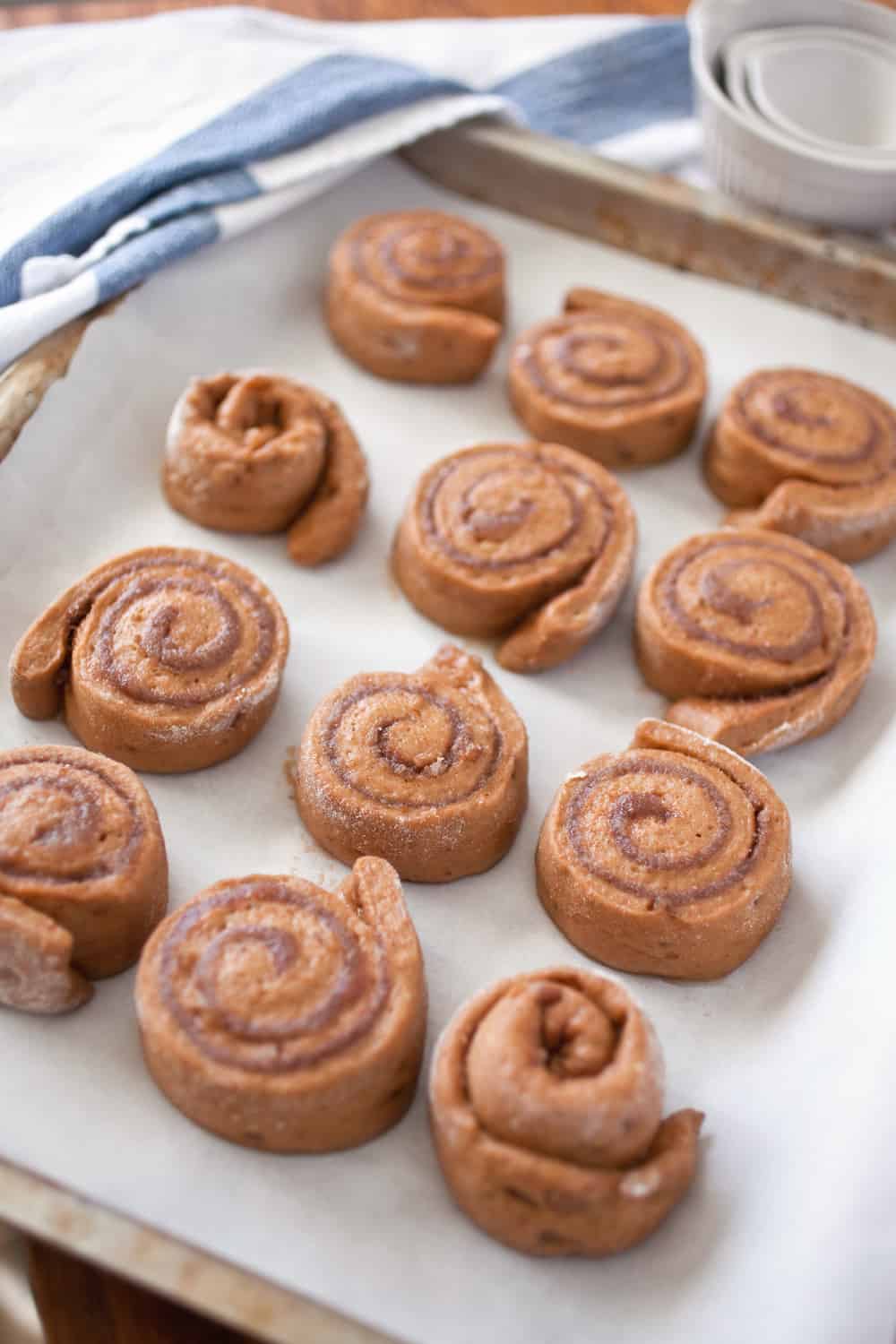
Another reason it did not expand a second time is that you might have rolled them too tight. The dough needs room to rise. If you do not give the dough enough space, the dough will stay dense.
If you want it to rise a second time, there are a few steps you can take. After you have rolled and shaped the dough, give each roll enough space to expand. Give the rolls 30 minutes or more to swell. It should double its size or show a good amount of growth. Do not let it enlarge more than necessary as that will cause it to collapse.
What Should I Do If My Cinnamon Rolls Did Not Rise?
Instead of throwing it out, you can choose to make a different dish out of it. Cut it up into pieces, add some salt and spices to make some delicious crackers. Pizza is another dish that you can consider. Pizza dough does not have to rise beforehand. It will expand in the oven as it warms up.
You can attempt to make them rise through other methods. However, if that does not work out, you can still bake them. The cinnamon rolls might come out a bit dull in taste.
How Do You Make Dough Rise In The Oven?
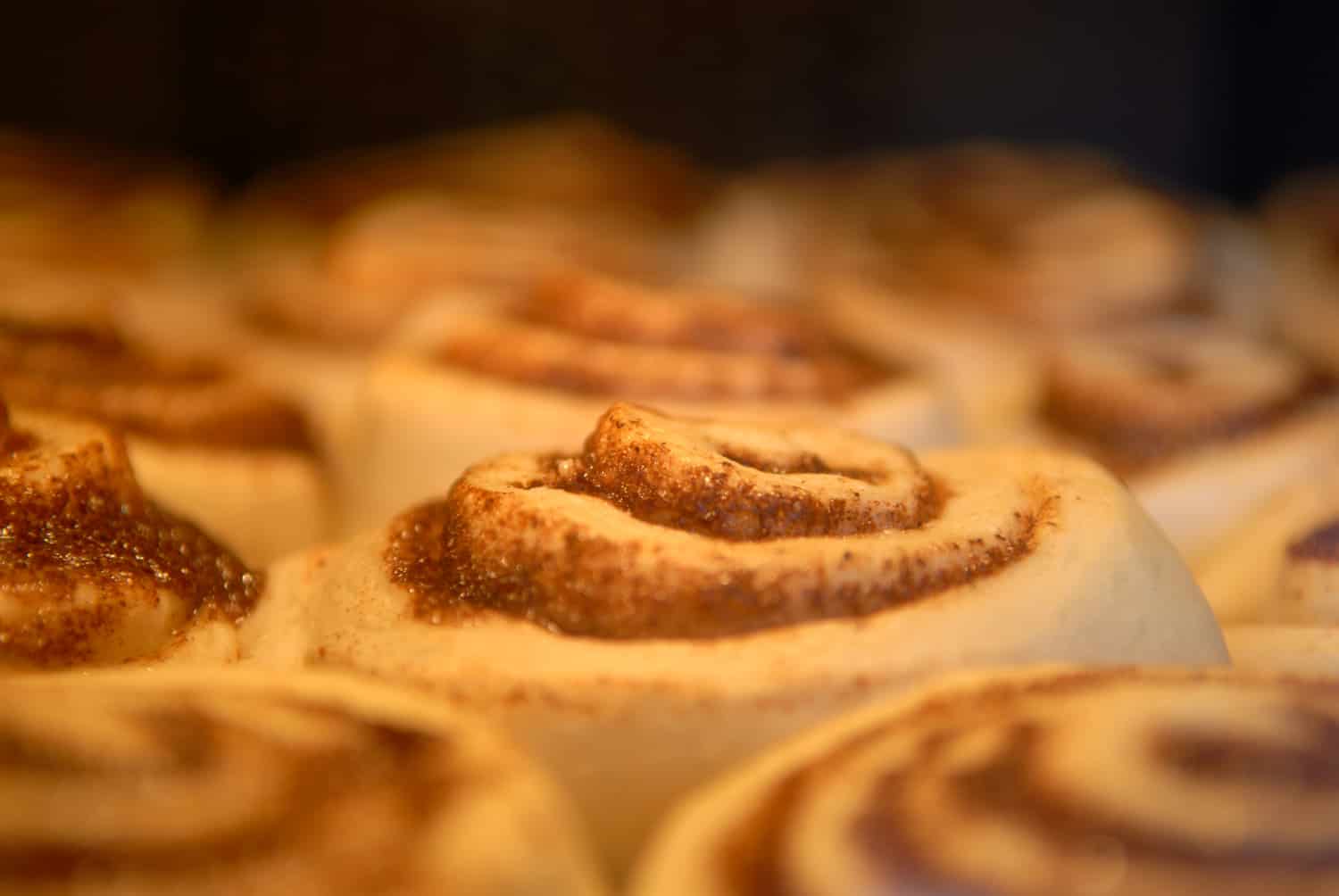
Temperature is an essential factor for yeast to rise. If it is too cold, the yeast will have trouble expanding. If it is too warm/hot, you will likely kill the yeast. That is why the oven is one of the best places to allow the yeast to swell.
Be careful because the temperature in an oven can quickly rise and kill the yeast. To start with the process, you will need to know what your oven has to offer. Some have a proof setting that will set the ideal conditions for yeast to rise. Others have a light that can give off enough heat for yeast to thrive in.
If your oven lacks these options, you can preheat the oven to the lowest temperature for two minutes. After two minutes, turn the oven off and place your dough inside. The dough should be inside a covered glass bowl.
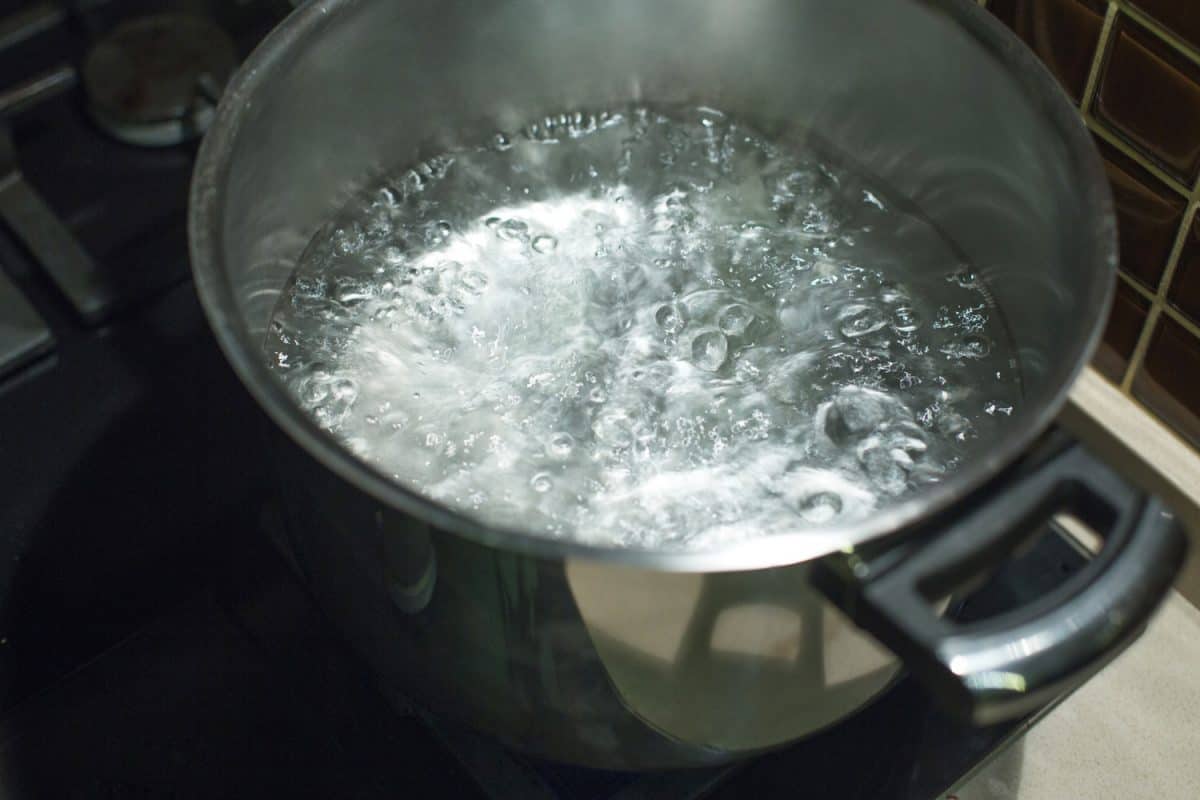
The last method requires you to boil water. Pour the boiling water into a glass baking dish and place it on the bottom rack of the oven. Your dough should be on the top rack. Shut your oven and check on it periodically until the dough rises.
Final Takeaway
It takes time to get familiar with getting yeast to rise. Once we get the hang of it, producing quality cinnamon rolls will get easier. Family members and friends will want to know how you can make such a delicious work of art! We hope you found the article informative, until next time!




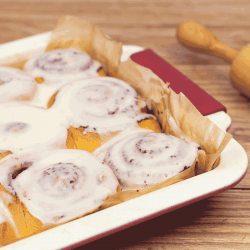
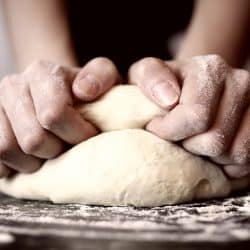
![Tray of partially baked cinnamon rolls at a bakery, How Long Do Cinnamon Rolls Last? [Room Temperature, Fridge, and Freezer]](https://kitchenseer.com/wp-content/uploads/2021/06/Tray-of-partially-baked-cinnamon-rolls-at-a-bakery-250x250.jpg)
